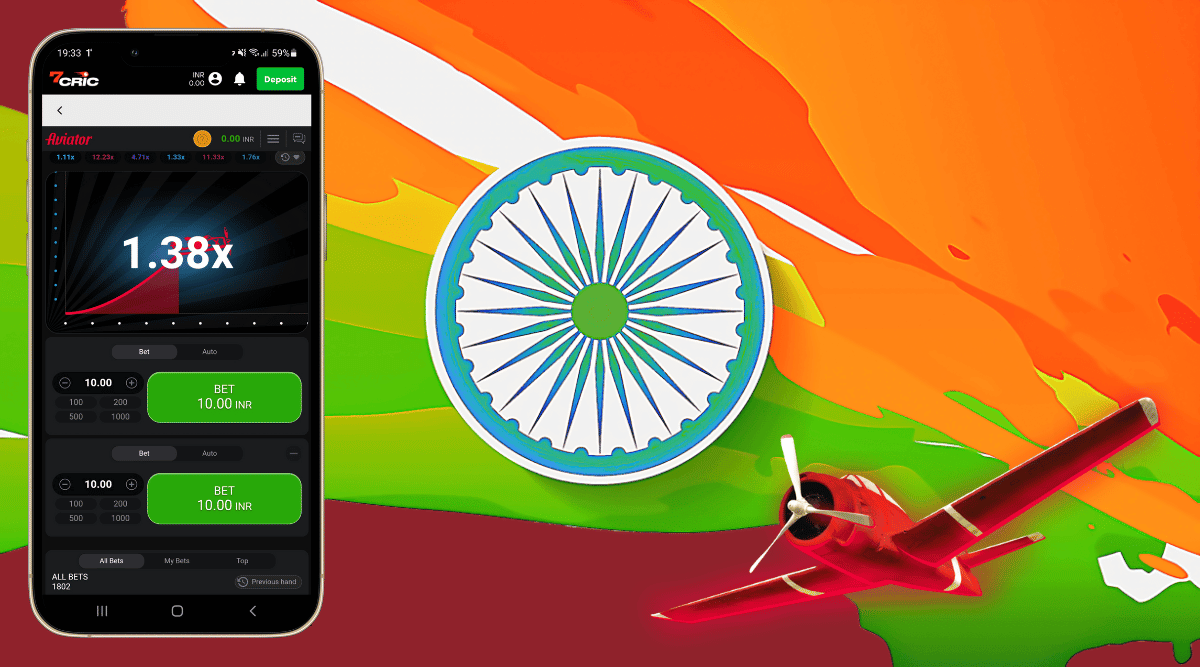Aviator Game Data Analysis: Math, Formula, Statistics – As an avid gamer and math enthusiast, I’ve become fascinated with analyzing the data behind Aviator.
After countless hours studying the game’s formula and statistics, I’ve uncovered some fascinating insights that have deepened my appreciation for it.
Claim up to ₹15,000 Welcome Bonus Now
Claim up to ₹15,000 Welcome Bonus Now
- Fastest Indian Rupees Withdrawals
- Fast deposits with UPI
- Available in four different Indian languages
In this guide, I want to share what I’ve learned in hopes of enhancing your own Aviator experience.
We’ll explore how the multiplier grows over time based on statistical probabilities, and how slight adjustments in odds can dramatically impact gameplay.
Key Takeaways
Hide- Aviator graph analysis reveals player behavior and game mechanics.
- Understanding math improves predictive capabilities.
- Implementing strategies reduces losses and improves gameplay.
- Provably Fair system ensures transparency and fairness in game results.
Understanding these numerical nuances helps reveal the hidden complexity and beauty within this seemingly simple game.
Whether you’re a fellow math nerd or just appreciate gaining a deeper perspective, let’s dive into the world of Aviator game together.
I’m eager to show you how numbers and data analysis can unlock new dimensions of this thrilling game, adding layers of insight and interest.
Buckle up, because we’re about to crunch some exciting data and formulas that spotlight the magic behind the game!
Aviator Game Data Analysis

Now, let’s turn our attention to Aviator Analysis.
We’ll explore the relevance of graphs, RNG, and the concept of ‘Provably Fair’ in the game.
We’ll also focus on how to make accurate predictions using mathematical data.
The Aviator Graph
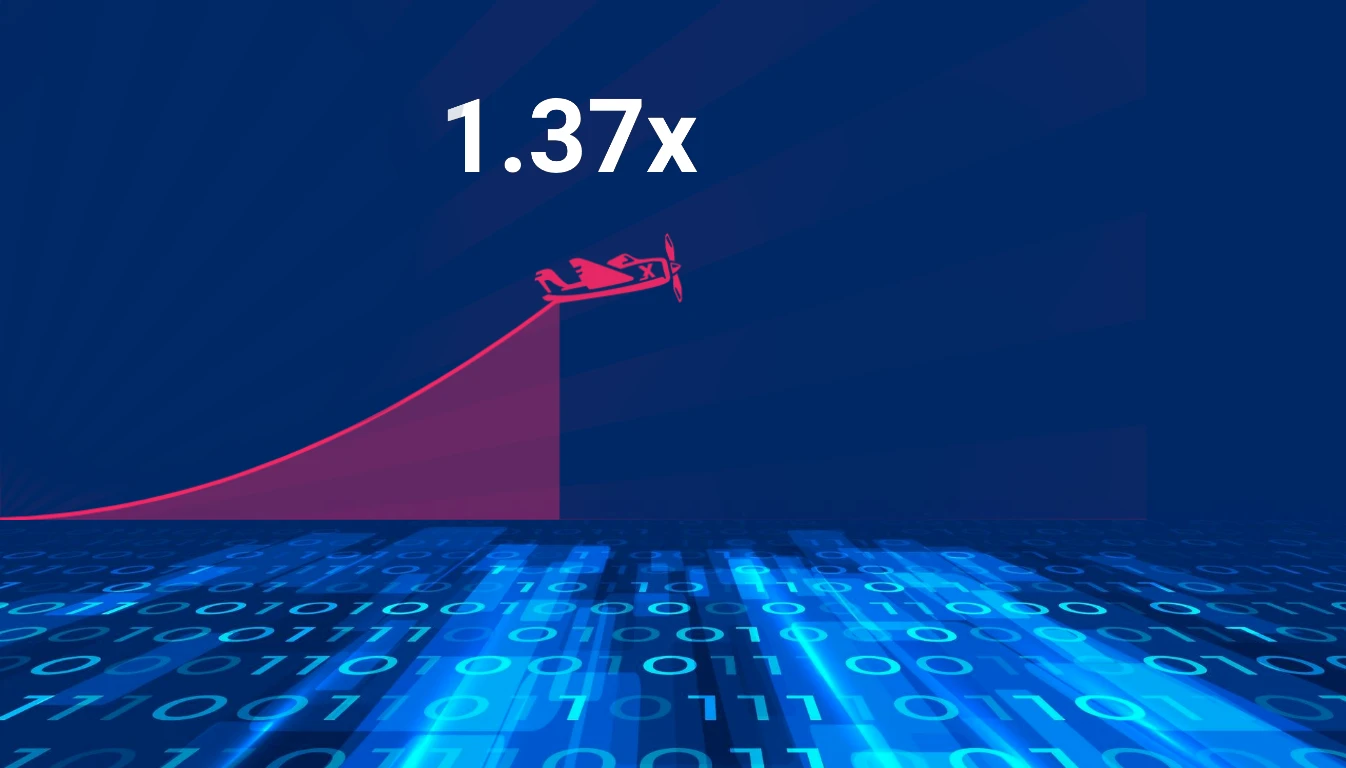
Diving into the graph analysis of Aviator game data, I’ve uncovered key insights into player behavior and game mechanics.
The Aviator graph analysis reveals intriguing Aviator patterns. These patterns, drawn from Aviator round history, provide a clear snapshot of players’ decisions and game outcomes.
By carefully studying this, I’ve found out key strategies that players adopt for winning.
The Aviator stats, generated by the Aviator game algorithm, are represented graphically, providing a visual interpretation of data.
This representation aids in understanding the frequency of certain strategies and their corresponding results. The Aviator patterns, when further scrutinized, can even hint at possible future outcomes.
This understanding will help players devise strategies that increase their chances of success, making the game more engaging and competitive.
Random Number Generator (RNG)

Often, I’ve found that the role of RNG (Random Number Generator) in Aviator games plays a crucial part in influencing these observed patterns and strategies.
RNG is what makes each round of an Aviator game online unpredictable and exciting. In Aviator game data analysis, we often examine how RNG impacts the game’s results.
| Aviator Game Component | Role of RNG |
|---|---|
| Spribe Aviator Game Algorithm | Decides plane’s take off speed |
| Aviator Betting Game | Influences player’s bet outcome |
RNG’s influence on the Spribe Aviator game algorithm is particularly interesting. It decides the plane’s take off speed and thereby, the potential return on each bet.
In the Aviator betting game, RNG’s role is a bit more direct – it influences the outcome of each player’s bet.
Provably Fair

Switching gears to the concept of ‘
This term refers to the transparency and fairness of the game’s results, ensuring that they’re not manipulated.
- Provably Fair system in Aviator games involves:
- Utilizing blockchain technology, which ensures that data can’t be altered or tampered with.
- Providing a ‘Hashed Seed’ before every game, a unique code to verify the fairness of the game.
- Allowing players to check the game’s outcome using the given seed, confirming that the result was predetermined and not manipulated.
With this in mind, we can fully trust the game’s results. Now, let’s delve into the exciting realm of ‘predictions’ in Aviator games.
Aviator Predictions
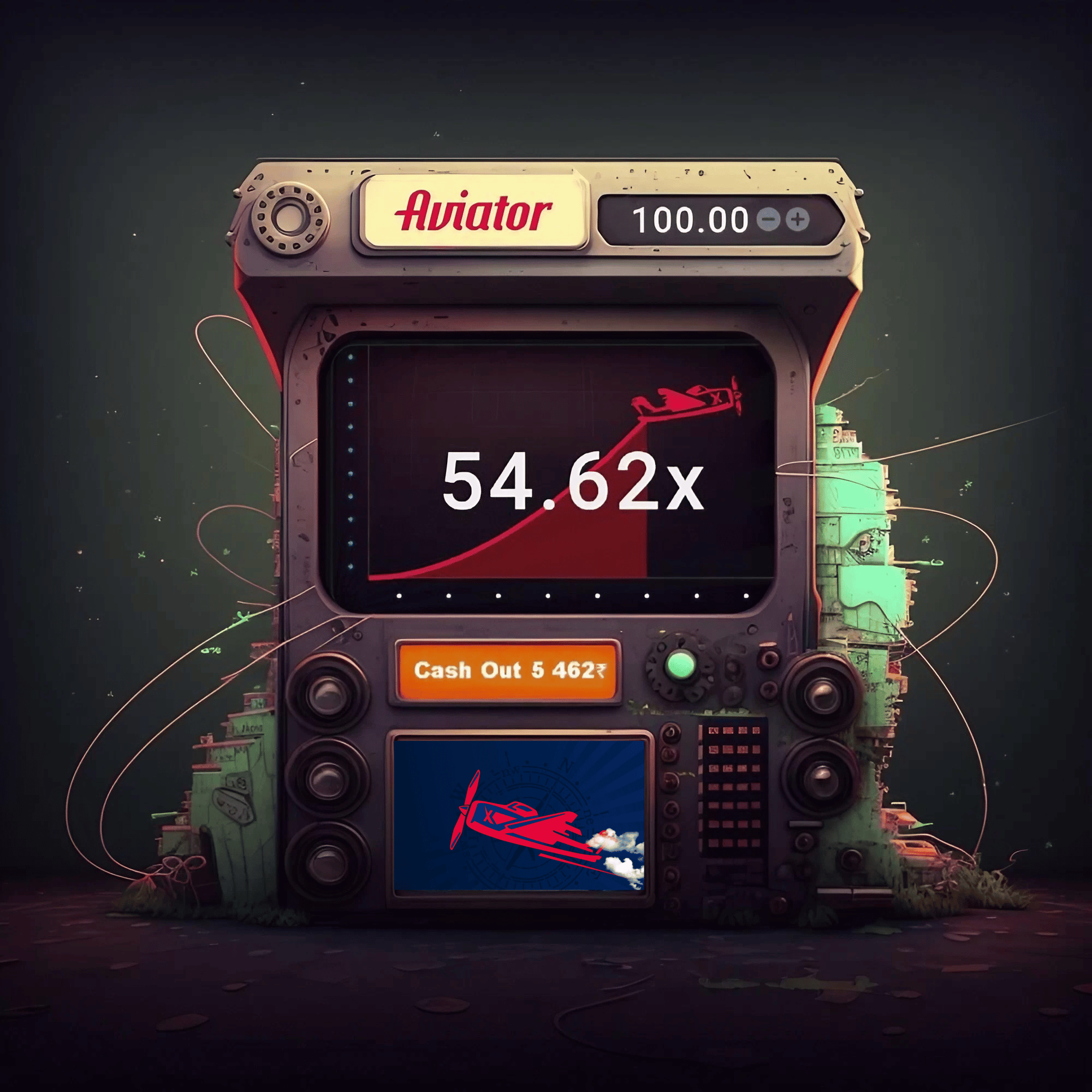
Now that we’ve covered the Provably Fair system, it’s time for me to take you through the intriguing world of predictions in Aviator games.
Predictions are the heart of the game, determining whether you win or lose. They’re based on a mathematical model, but there’s also a strong element of luck involved.
You’re essentially trying to predict when the Aviator will crash. The longer you wait, the higher your multiplier gets – but wait too long, and you might lose it all.
To make accurate Aviator predictions, it’s crucial to understand the data and statistics of the game. Studying past data, understanding the odds, and using a solid strategy can significantly improve your prediction accuracy.
But remember, like all casino games, the house always has an edge.
Math Behind Aviator Game

In my analysis of Aviator’s math, the game’s underlying probability structure plays a pivotal role in understanding its dynamics and making accurate predictions.
To illustrate, consider these key mathematical elements:
Probability distribution:
- The outcomes aren’t equally likely.
- The more extreme results are less probable.
Expected value:
- The long-term average value of repetitions of the experiment it represents.
- This can guide our betting strategy.
Variance:
- This measures the spread of the probability distribution.
- It can help us understand the risk associated with different strategies.
These are the mathematical foundations that Aviator operates on. Understanding these will significantly improve our predictive capabilities.
Now, let’s move on to discuss some effective strategies, given our understanding of these mathematical principles.
Aviator Strategies & Tricks

Given these mathematical insights, I’ve found several strategies that can significantly enhance our performance in the Aviator game.
First, understanding the trajectory patterns of the aircraft can help us predict its movement.
Second, mastering the art of fuel management can maximize our flight duration.
Moreover, timing our take-offs and landings can greatly improve our score.
Implementing these Aviator game strategies involves a careful analysis of the game’s data, a solid grasp of the underlying mathematical concepts, and a lot of practice.
However, the payoff can be immense, leading to not only higher scores but also a deeper appreciation of the game’s mechanics.
Now, let’s delve deeper into the mathematical analysis of Aviator to further optimize our gameplay.
Mathematical Analysis of Aviator
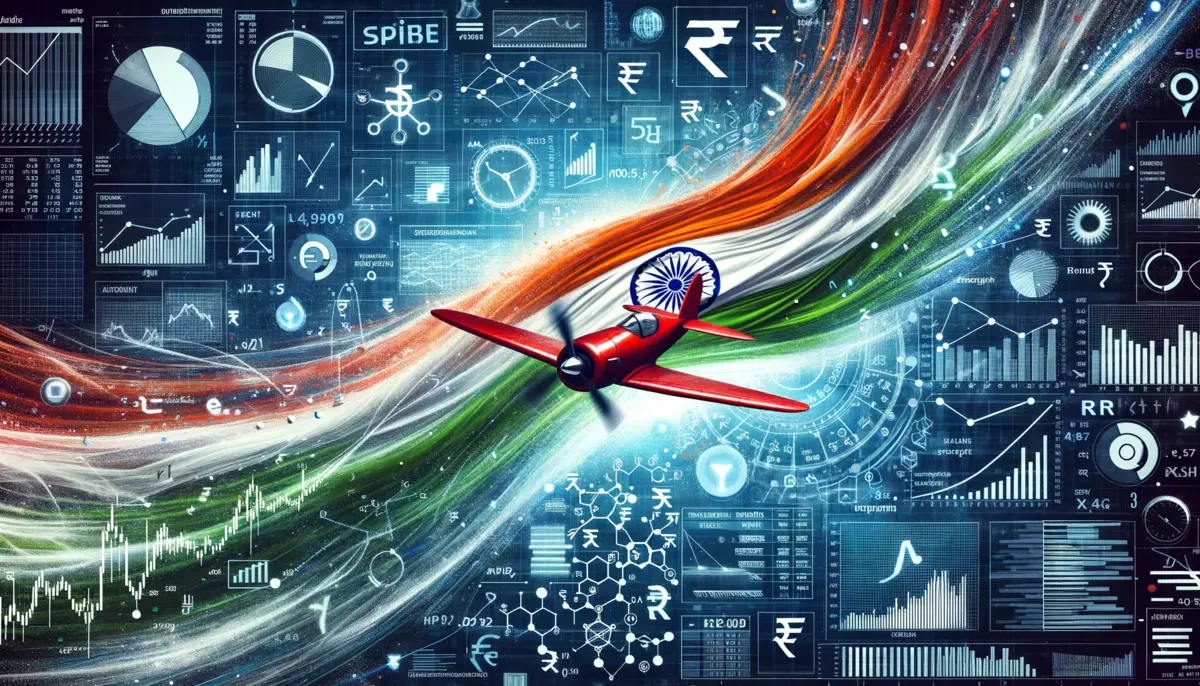
Let’s now shift our focus to the mathematical analysis of the Aviator game. By understanding how this works, we can gain insights into the game data analysis.
I’ll walk you through the key points you need to know in this area.
How Do Mathematical Analysis of Aviator Game
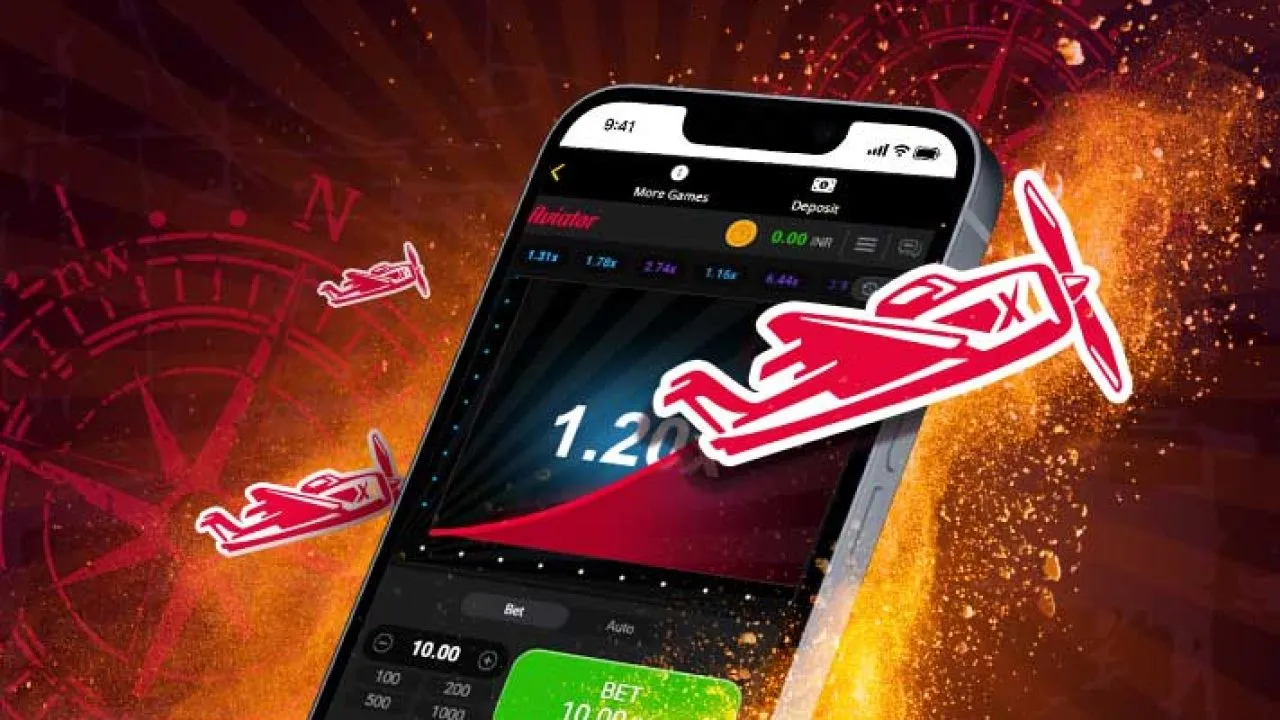
I’ll dive right into the mathematical analysis of the Aviator game, focusing on how to calculate and interpret crucial data points to improve gameplay strategy.
The analysis involves:
Evaluating player performance:
- Calculating average flight time.
- Determining frequency of successful landings.
- Assessing points accumulated over time.
Studying game mechanics:
- Understanding the influence of various game variables.
- Analyzing the relationship between speed and altitude.
- Predicting fuel consumption rates.
Developing optimized strategies:
- Creating formulas for ideal flight paths.
- Forecasting the best moments to use power-ups.
- Modeling risk and reward scenarios.
These steps allow us to extract meaningful insights from the raw data, shaping effective strategies and enhancing the gaming experience.
I’ve written a comprehensive Aviator game review that specifically explains the game mechanics, so you might want to read it further.
What You Need To Know About Aviator Game Data Analysis
In continuing our exploration, it’s essential to understand that a mathematical analysis of the Aviator game provides a comprehensive view of game dynamics and player behavior, laying the groundwork for strategic improvement.
It’s not just about number crunching; it involves understanding the underlying patterns and trends, interpreting player’s decisions, and making predictions.
This analysis can highlight strengths and weaknesses, improve game balance, and even guide game design.
You’ll need a firm grasp of statistics and probability, as well as an understanding of how players interact with the game.
It’s a complex process, but one that can lead to a more engaging and rewarding gaming experience.
Nuances in the analysis of the Aviator Game
Delving into the intricacies of the Aviator Game, I’ve come across several nuances that require meticulous attention during data analysis.
Player Behavior Patterns
- Some players are risk-takers, escalating quickly, which can skew average game duration data.
- Others are cautious, stretching the game longer, affecting the same metric differently.
Game Environment Variables
- Weather influences: Storms might cause unforeseen crashes, influencing the success rates.
- Time of day: Night flights could be more challenging, impacting scores.
Statistical Anomalies
- Outliers: Exceptionally high or low scores can distort the overall data interpretation.
- Trends: A sudden spike in player count might indicate a game event, not a regular pattern.
Understanding these nuances helps me craft a more accurate analysis, and thus, a more precise prediction model.
Game Scenarios
Let’s look at the three main game scenarios: win, loss, and draw.
These outcomes are crucial in data analysis of the Aviator Game. Understanding these points will help us decipher patterns and predict future game results.
Win
Often, I’ll analyze various win scenarios in the Aviator game to determine the most effective strategies.
These scenarios can be diverse and complex, but I’ve found that there are a few key strategies that consistently lead to success. They are:
- Mastering flight controls:
- Understanding the physics of the game.
- Improving reaction time.
Efficient resource utilization:
- Balancing fuel consumption.
- Optimizing aircraft upgrades.
Strategic planning:
- Defining clear mission objectives.
- Adapting to unexpected challenges.
Each of these strategies requires practice and a solid understanding of the game mechanics. But when executed correctly, they can significantly increase your win rate in the Aviator game.
Loss
I’ll now examine various loss scenarios in the Aviator game, highlighting potential pitfalls and common mistakes that can derail your strategy.
Loss in the game typically occurs due to poor strategy, bad luck, or a combination of both. Understanding these scenarios is crucial to improving your gameplay and avoiding repetitive mistakes.
Here’s a quick table showing three common loss scenarios and corresponding strategies:
| Loss Scenario | Cause | Strategy |
|---|---|---|
| Crash Landing | Poor Timing | Improve reaction time |
| Fuel Depletion | Bad Route Planning | Plan route more effectively |
| Enemy Encounter | Lack of Defense | Upgrade aircraft defenses |
Draw
Moving on from loss scenarios, we’re now turning our focus to instances where the game ends in a draw, a situation that throws up its own unique challenges and strategies.
In Aviator, a draw isn’t as clear-cut as it might seem, and it’s essential to understand how it impacts your overall game data.
Here are a few scenarios where a draw can significantly alter your gameplay:
When both players have the same score:
- This can impact your streak record
- It may affect the player’s morale, leading to a change in strategy
In the event of a system error:
- This might result in a default draw
- This could skew your game data, affecting analysis
If the game time expires:
- This leads to a draw, regardless of the current scores
- It adds an element of time management to your strategy
Analysis Nuances
In examining the Aviator game data, it’s crucial to understand the nuances of the analysis process. They aren’t just about numbers but also about the interpretation and context of these numbers.
It’s not about simply compiling statistics, but rather interpreting them to make meaningful conclusions.
Consider the table below:
| Aspect | Interpretation |
|---|---|
| Flight Duration | Reflects player skill |
| Fuel Consumption | Indicates efficiency |
| Distance Covered | Represents game progression |
| Crashes | Shows error frequency |
| Successful Landings | Measures success rate |
Each aspect of the game data holds a distinct value and provides a unique insight into player behavior and game performance.
It’s these nuanced interpretations that make data analysis a powerful tool in game development. Understanding these nuances helps us create a more engaging gaming experience.
Conclusion for Aviator Game Data Analysis
In wrapping up, I’ve uncovered the fascinating math and statistics behind Aviator. Understanding the game’s intricacies, from its various scenarios to the subtle nuances in its analysis, has been an enlightening journey.
Claim up to ₹15,000 Welcome Bonus Now
Claim up to ₹15,000 Welcome Bonus Now
- Fastest Indian Rupees Withdrawals
- Win 1000x Bet Amount!
- 450% Bonus up to ₹1,000,000
It’s clear that a strategic approach based on a solid grasp of the underlying formulas can significantly enhance one’s gameplay. So, don’t just play Aviator, play it smart. This will help you play Aviator game in India and win big.
Let the numbers guide your flight!
Frequently Asked Questions (FAQs)
What Type of Software Is Best for Analyzing Aviator Game Data?
In my opinion, software like Python or R, known for their data analysis capabilities, would be ideal for analyzing aviator game data. They offer powerful statistical tools and visualizations to better understand the data.
How Does the Aviator Game Affect the Cognitive Abilities of the Player?
I’ve noticed that playing the Aviator game can enhance a player’s cognitive abilities. It sharpens decision-making skills, improves hand-eye coordination, and boosts strategic thinking by navigating through various in-game scenarios.
Can These Data Analysis Techniques Be Applied to Other Video Games?
Absolutely, these data analysis techniques can be applied to other video games. I’m confident they’d help in understanding player behavior, improving game design, and enhancing the overall gaming experience. It’s a versatile method.
Is There a Correlation Between Playing the Aviator Game and Improving Mathematical Skills?
I’m not entirely certain. It’d require a comprehensive study to establish a clear correlation between playing a specific game and enhancing mathematical abilities. But, logically, games involving calculations could potentially improve such skills.
What Is the Impact of the Aviator Game on the Gaming Industry in General?
I’m not sure about its overall impact, but I believe the Aviator game has certainly brought a fresh perspective to the gaming industry. It’s unique, engaging and offers an educational aspect, which isn’t common.
Article References
Aviator Game adheres to rigorous sourcing protocols, placing reliance on peer-reviewed analysis, iGaming research institutions, and reputable iGaming organizations. We refrain from utilizing tertiary sources. To gain further insights into our methods of ensuring the accuracy and currency of this article, you can learn more about our Editorial Policy.
- [1] SPRIBE (2023).
https://spribe.co/provably-fair





